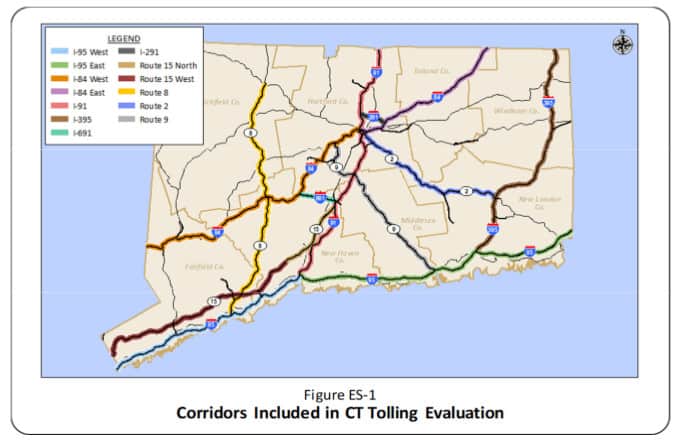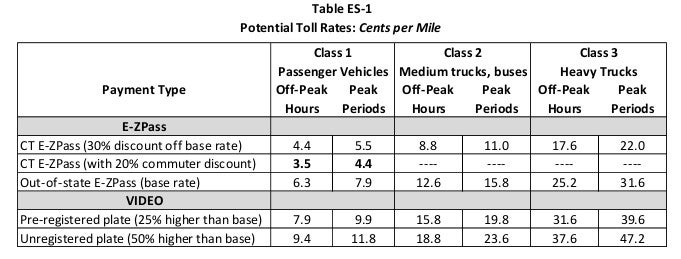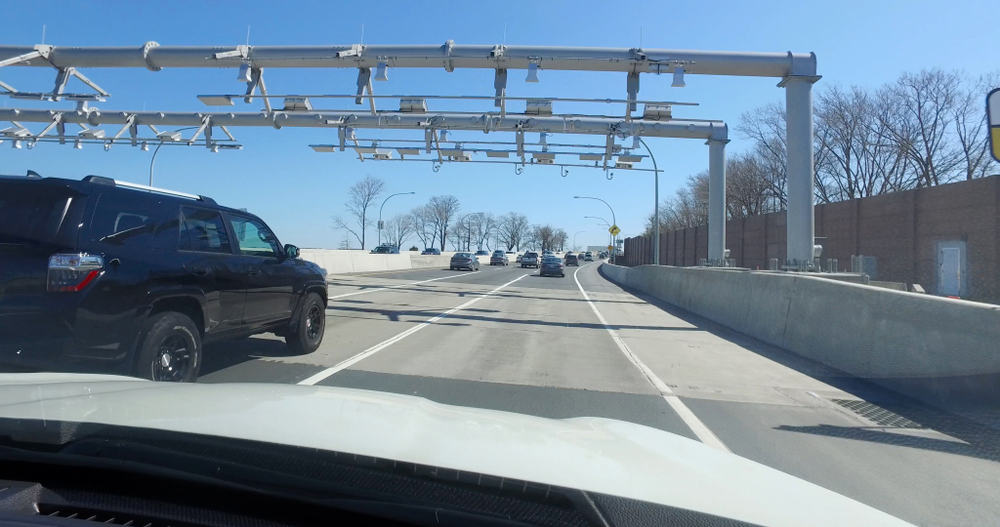Despite a Connecticut Department of Transportation (CTDOT) report that says tolling all vehicles in the state could generate $1 billion a year in revenue, Governor-Elect Ned Lamont (D) insisted that he is only focused on placing tolls on commercial trucks.
“Well my position on electronic tolling is very clear. We are going to focus just on those big tractor-trailer trucks. And that will raise us $250 million,” Lamont said, according to a report from WSHU public radio. “It’s something l think I can get through this legislature on short order. And I want to get going on that.”
CTDOT just announced the results of a study on tolls for all vehicles. The report said the state, through the implementation of some 82 electronic toll gantries, could raise $1B a year, even with toll rates as low as 3.5 cents per mile.
“The report we are releasing today is designed to inform a dialogue among our elected leaders and the citizens of Connecticut about the potential for instituting tolls in the state,” said CTDOT Commissioner James P. Redeker. “[Outgoing] Governor [Dannel] Malloy’s Transportation Finance Panel concluded that current revenues are insufficient to maintain our roads and bridges or to remove traffic bottlenecks and reduce congestion and recommended tolls as one way of generating new revenue.”
CDM Smith, which conducted the study, proposed electronic tolling gantries on all the state’s major highways – 95, 84, 91, 395, 691 and 291 – as well as state routes 15, 8, 9 and 2.
The report suggested setting both peak and off-peak rates in an effort to reduce congestion. The average Connecticut driver, it found, drives 12 miles on limited access highways. That trip, the report said, could cost between 42 cents and 53 cents, depending on the time of day.
According to the report, Connecticut drivers would receive a discounted rate as the state hopes to capture “significant revenue from out-of-state drivers who use CT roads, but currently pay little or nothing for using the roads.” Rates, it said, would be comparable to neighboring states but still “some of the lowest rates in the nation.”

Toll rates would be lower for those using an E-ZPass and higher for out-of-state vehicles. Those without an E-ZPass would be charged by video – with cameras snapping pictures of license plates and billing the vehicle owners. Those rates would be up to 50% higher, the report said.
The report said that trucks would generate 29% of the revenue – about $300 million per year, and 40% of total revenue would come from out-of-state vehicles, which represents about 30% of Connecticut traffic, it said.
It would cost about $372 million to install the system and about $100 million a year to operate, the report notes.
Pointing out the peak/off-peak rates, the report believes that this congestion pricing approach would save drivers 12 million hours a year and $300 million in economic value as drivers would choose less costly times for non-essential travel.

For a commuter traveling along I-95 from New York to New Haven during peak hours, the toll would be $2.11 one way. Out-of-state trucks without an E-ZPass, the report said, could pay as much as 47.3 cents per mile, increasing that cost to about $22. Truck rates could be as low as 17.6 cents per mile for Connecticut-based trucks during off-peak hours, and 31.6 cents per mile for an out-of-state truck using an E-ZPass during peak times.
The study noted that 14 East Coast states have some form of tolling already.
Lamont remains committed to his campaign pledge of trucks-only tolling, though. With Democrats now in charge of both houses of the state legislature, the possibility of a bill passing increases. Three separate toll bills were introduced in the past legislative session, although none were put up for a vote. Democrats and Republicans evenly split the state house in the last session. Senate President Martin Looney said he would support Lamont’s efforts to introduce tolling.
“If the Governor wants to begin with that as an incremental step, I would certainly support him on that,” Looney said, according to WSHU.
Earlier this year, Rhode Island instituted truck-only tolls along I-95. The American Trucking Associations and three state-based carriers – Cumberland Farms, M&M Transport Services, and New England Motor Freight – have sued the state claiming the tolls are discriminatory and violate the Commerce Clause, which regulates interstate commerce.
“This toll regime was designed to, and does in fact, impose discriminatory and disproportionate burdens on out-of-state operators and on truckers who are operating in interstate commerce. By design, the tolls fall exclusively on the types of trucks that are most likely to be engaged in the interstate transport of cargo, while exempting automobiles and the smaller vehicles that are relatively more likely to be engaged in intrastate travel. The toll program also limits the tolls collected from trucks that make multiple trips within Rhode Island in a single day, a feature that was expressly intended to, and does in fact, provide disproportionate benefits to Rhode Island operators and those engaged in intrastate commerce,” the suit alleges.
Indiana recently increased truck tolls approximately 35%.











